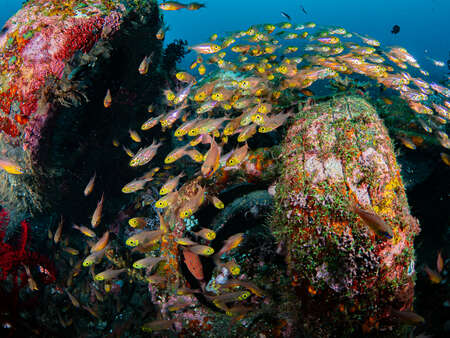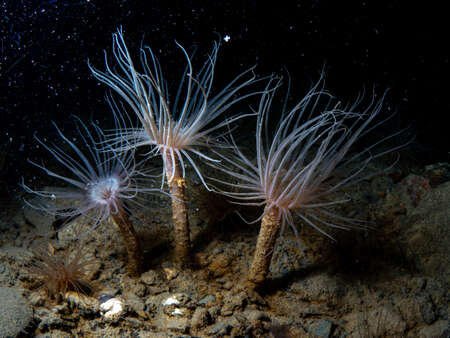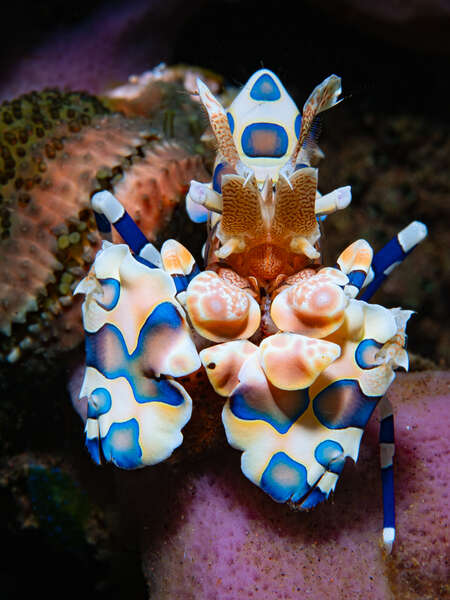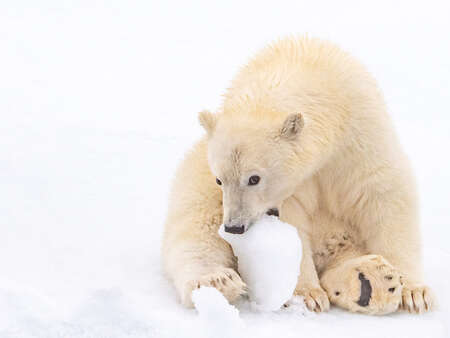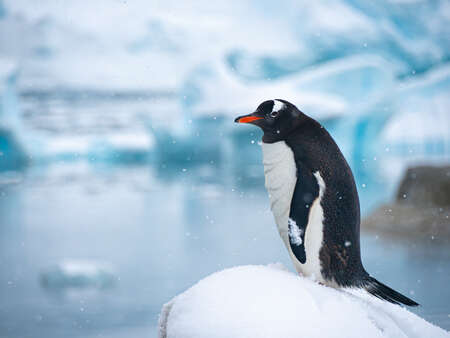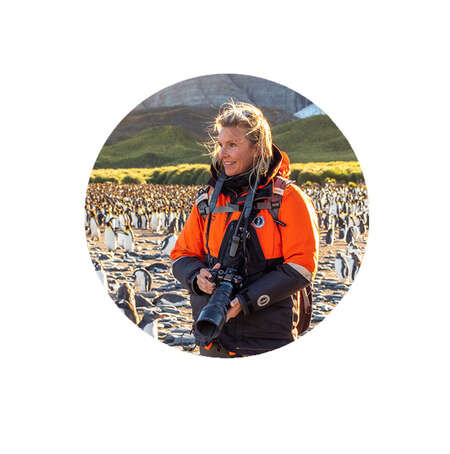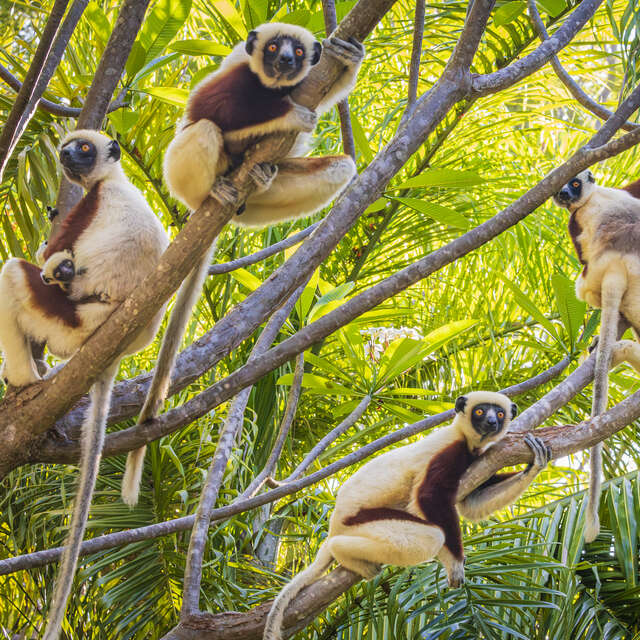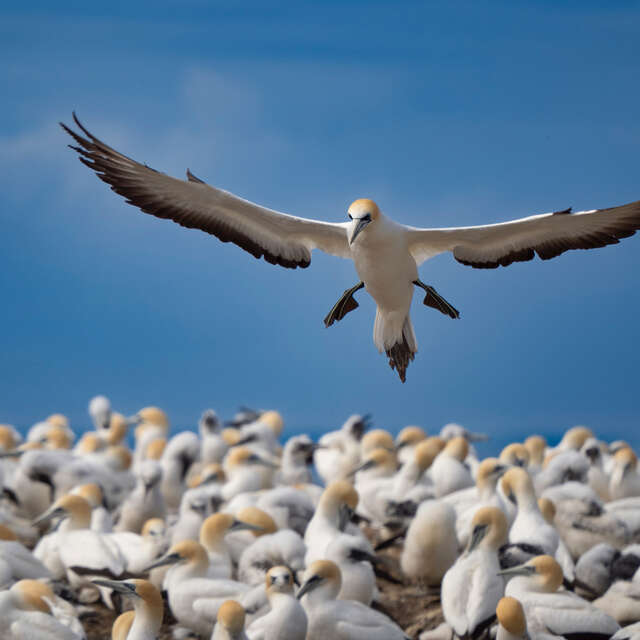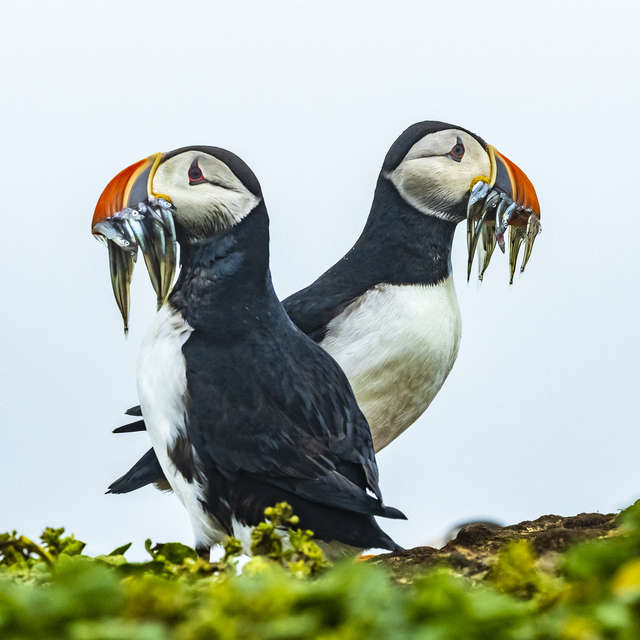I am a conservation photographer working both above and below water with a passion for marine life. I have the privilege of working with Lindblad Expeditions in some of the most remote places in the world. Much of my time is spent in the polar regions of Antarctica and the high Canadian Arctic as well in areas in the tropics such as Papua New Guinea and the Marquesas. My interests have shifted toward documenting and sharing unique, exciting, sometimes shocking stories of undersea life in some of the most under-explored and understudied areas on earth.
While in Bali last year, I felt so lucky to use my M.Zuiko 8mm fisheye lens to document a new, very successful underwater artificial reef that was designed using recycled tires and now creates a home for a diverse community of thousands of fish that otherwise would have no place for protection from predation. On expedition in the Arctic, I was able to photograph the beauty of an overlooked species - tiny little tube anemones reaching out into the water column seeking nutrients, dancing beneath me in a wild display, thriving in dark green, 29-degree F water.
I first became interested in trying OM System cameras in 2018 while working alongside Lindblad Expeditions Staff and a National Geographic Photographer on an expedition ship in Alaska. One day, I was driving a zodiac taking guests to observe wildlife in a remote strait near Glacier Bay National Park. The action that day was incredible - Sea lions were tossing fish out of the water, whales were surfacing all around us, and bald eagles were hunting overhead! It was fantastic! I found myself helping Lindblad Expeditions guests in my zodiac make their own images, explaining settings and how to set up the shots, but taking very few pictures of my own. It was a hassle to get my expensive DSLR out of the dry backpack, take a picture, then put it back. It was also too splashy and heavy to keep around my neck for several hours while out driving the zodiac.
When I returned to the ship at the end of the day, other expedition Staff I work with also had amazing, wildlife-filled adventures, but they had made sharp, stunning imagery all day long. I noticed many of my colleagues were using OM Systems gear which was lightweight enough to wear all day and weather-sealed to keep gear out and ready to catch those incredible moments of a lifetime before they passed. I was instantly excited to try out the OM micro-four thirds system starting with the EM1 Mark II. Within a year, I had switched my entire above and below water photography kit to OM Systems. Conservation photography relies on powerful imagery with attention to detail. I was stunned by the results of my new kit and how easy it is to use.
Not only do I enjoy the quality of the images coming out of my OM System kit, the lenses are smaller than their full-frame equivalent, reducing the space needed in my luggage so I can bring a greater variety of lenses to the action. Whether I’m looking to create an ultra-wide story or something super tight, OM Systems helps me reliably make high-quality images in some of the harshest environments on earth. We work so hard to get to see and experience these wild places for a very short time, it is a shame to miss the moment due to bulky, unsealed gear. It’s important to document and share these special spaces in the best way possible.
Christine is a conservation photographer, polar expedition diver and naturalist. She has worked as a professional diver for 17 years and now spends over six months per year in the field passionately documenting and sharing stories above and below water about places that are rarely seen and yet are rapidly changing due to the warming of the earth. Christine is passionate about creating images and stories that serve as voices for ecosystems that need immediate protection. She is driven to document and share the lesser-known stories, often leading her to photograph underwater some of the most remote areas on earth and loves to help others do the same.
